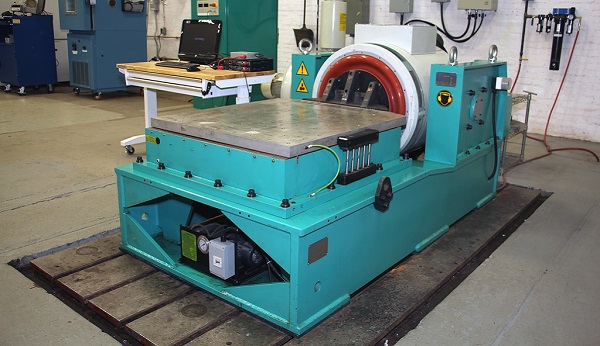Testing that Reaches the World
Battery Vibration Testing
Step into a realm of reliability and resilience with our specialized vibration testing services tailored for the battery industry. At Clark Testing, we recognize the critical role that vibration resilience plays in the durability and performance of battery technologies. Our advanced vibration testing capabilities are designed to rigorously assess the structural integrity and operational stability of your battery products under real-world conditions.
With our state-of-the-art vibration testing equipment and experienced engineers, we offer comprehensive testing solutions to ensure that your batteries can withstand the challenges of transportation, operation, and environmental factors. Whether you're developing batteries for automotive, aerospace, marine, or industrial applications, our testing protocols are meticulously crafted to simulate the harsh vibration environments your products may encounter.
 By partnering with Clark Testing, you gain access to a trusted partner dedicated to delivering accurate, reliable, and actionable results. Our commitment to excellence, combined with our industry-leading expertise, enables us to identify potential weaknesses early in the development process, saving you time and resources. Choose Clark Testing for your vibration testing needs and empower your battery innovations to thrive in even the most demanding environments
By partnering with Clark Testing, you gain access to a trusted partner dedicated to delivering accurate, reliable, and actionable results. Our commitment to excellence, combined with our industry-leading expertise, enables us to identify potential weaknesses early in the development process, saving you time and resources. Choose Clark Testing for your vibration testing needs and empower your battery innovations to thrive in even the most demanding environments
Test Set Up
In house custom design and fabrication capabilities (machining and welding) to ensure test fixtures accurately simulation environmental conditions. FEA capabilities to support fixture design along with welding, fabrication & machining services. Multiple vibration adapter plates and prefabricated test fixtures help to streamline the testing process.
Instrumentation capabilities including accelerometers and strain gages with multi-channel control and data acquisition equipment ensuring accurate test data is being recorded. All instrumentation and equipment is provided with measurement uncertainty and compliant with Clark’s ISO 17025-2017 Quality Program.
Lab technicians and engineers record daily test activities to register all activities, events, and responses during the test. The daily test logs along with test data, pictures and test procedures are included in comprehensive test report that is the industry standard.
Electrodynamic Vibration and Shock Capability
LING 249
- 30,000 sinusoidal force pound shaker
- 1" DA displacement
- 5Hz to 2,000Hz frequency capability
- 7ft x 10ft maximum dimension
- 10,000lb payload capacity
LDS V9
- 23,600 sinusoidal force pound shaker
- 3" DA displacement
- 5Hz to 2,000Hz frequency capability
- 4ft x 4ft maximum dimension
- 3,000lb payload capacity
- Combined Vibration / Temperature Stress 48”L x 48”W x 48”H
(-40°C to 80°C)
Spectral Dynamics
- 8,377 (3800kgf) sinusoidal force pound shaker
- 3.937” Peak to Peak (100mm) DA displacement
- 5Hz to 2,000Hz frequency capability
- 100G Max Accel
- 1.8m/s Max Velocity
- Combined Vibration / Temperature Stress 48”L x 48”W x 48”H
(-40°C to 80°C)
MB C50
- 5,000 sinusoidal force pound shaker
- 1" DA displacement
- 5Hz to 2,000Hz frequency capability
- 3ft x 3ft maximum dimension
- 500lb payload capacity
Hydraulic Vibration Capability
MTS RIM (Random Input Motion) Table
- 25kips Hydraulic Actuator
- 50 in/s Velocity
- + / - 5" Peak Displacement
- 1Hz to 100Hz frequency capability
- 4ft x 4ft Square Table (can be extended)
- 10,000lb payload capacity
MTS MIL Test Table
- 25kips Hydraulic Actuator
- + / - 1" Peak Displacement
- 1Hz to 100Hz frequency capability
- 9ft x 9ft Square Table (can be extended)
- 20,000lb payload capacity